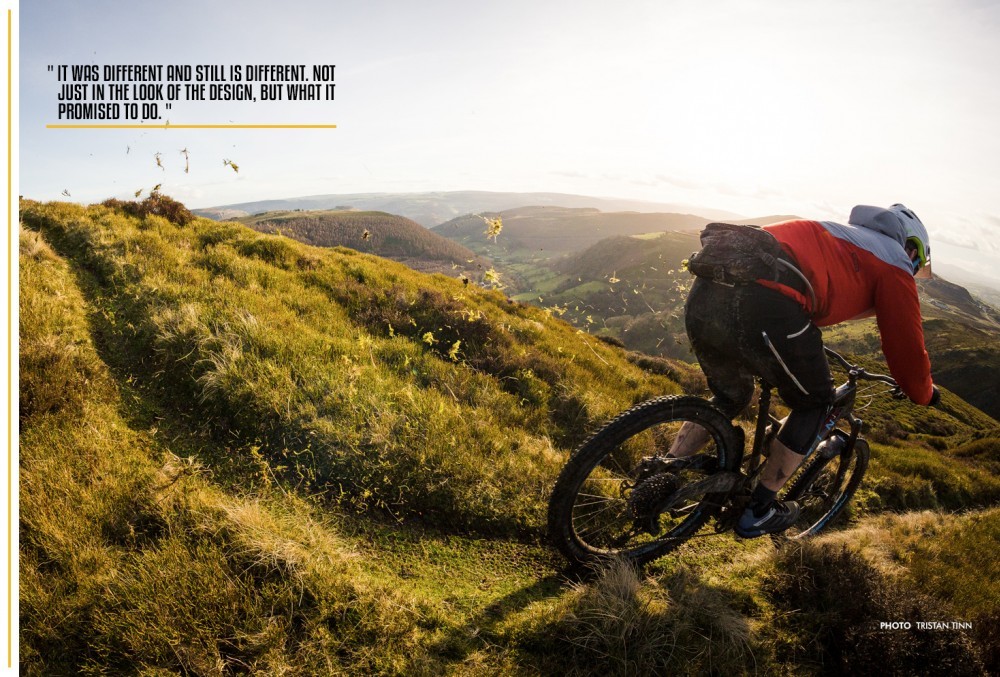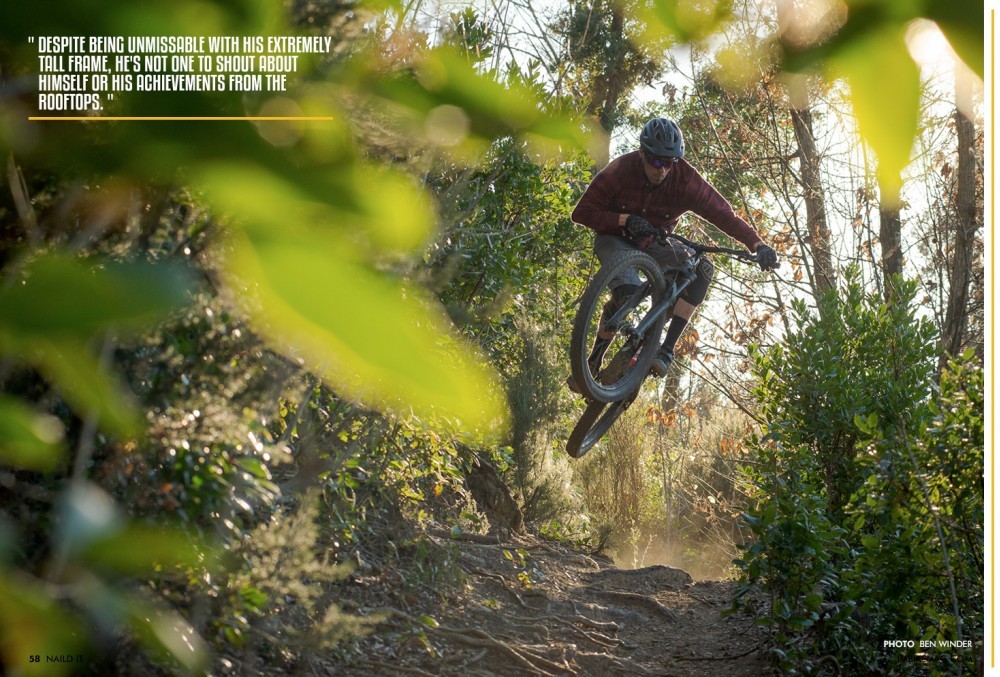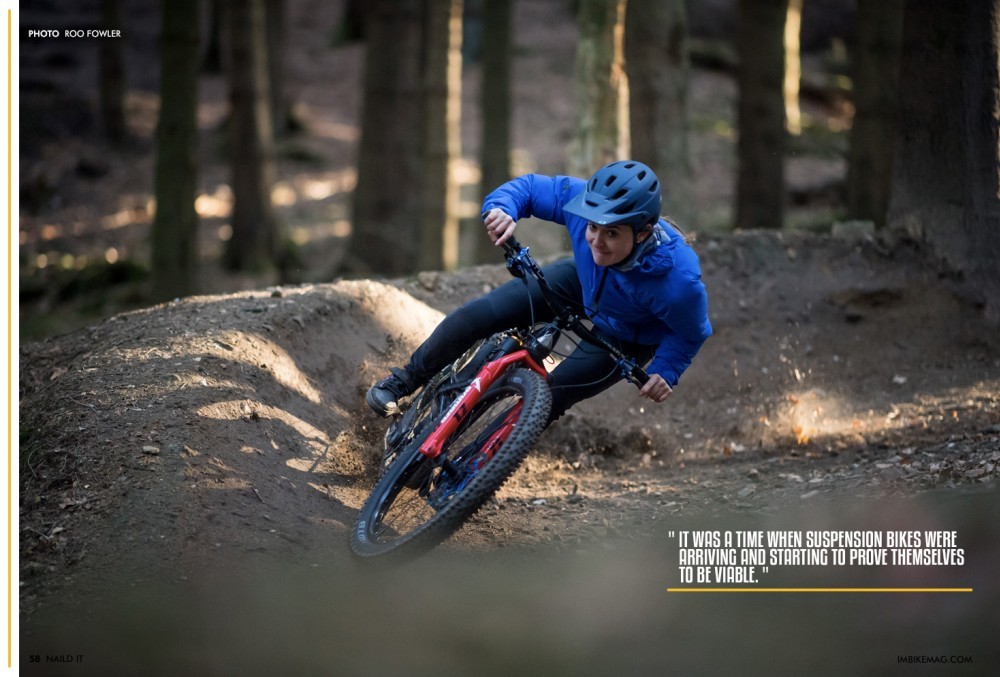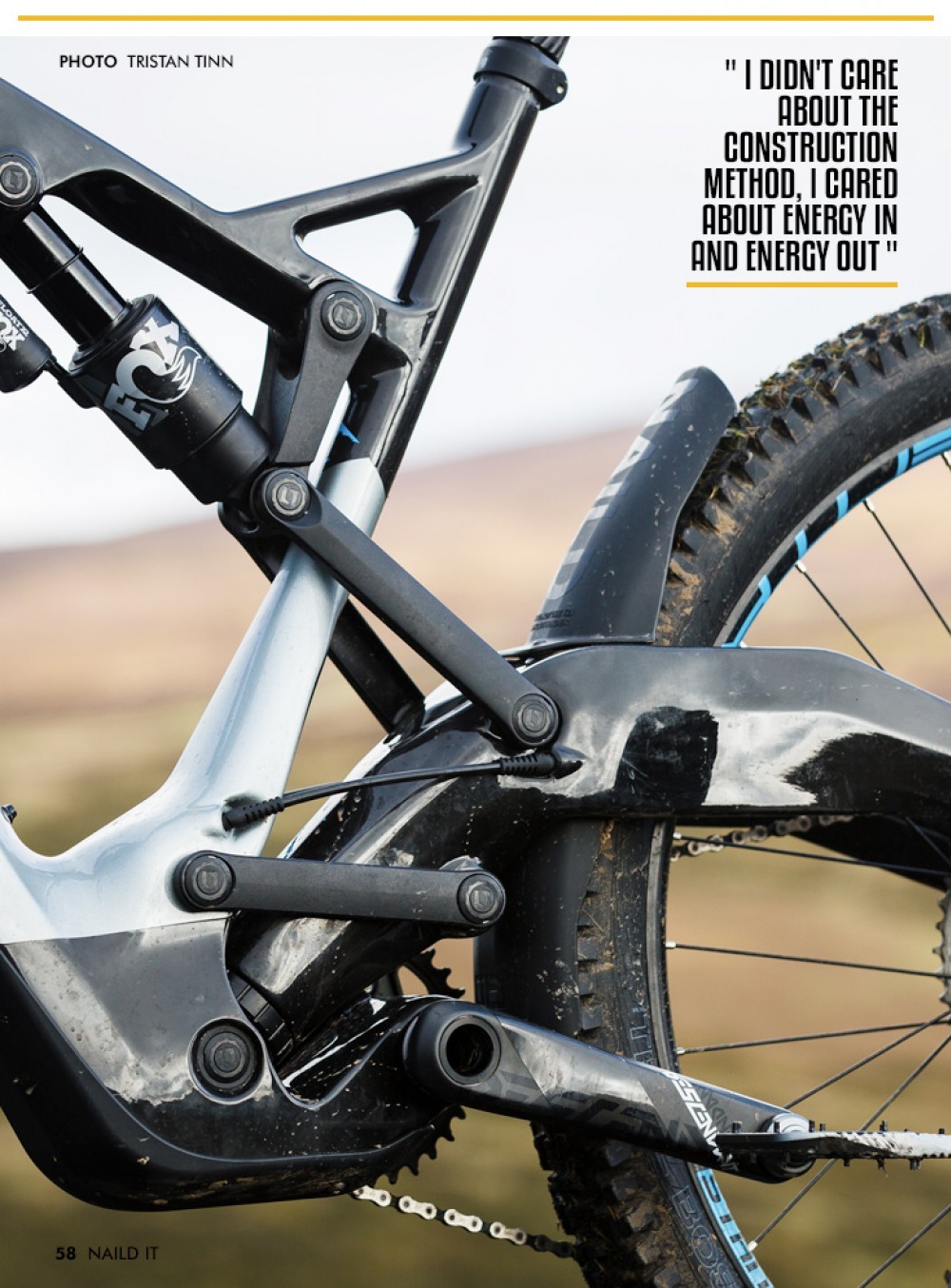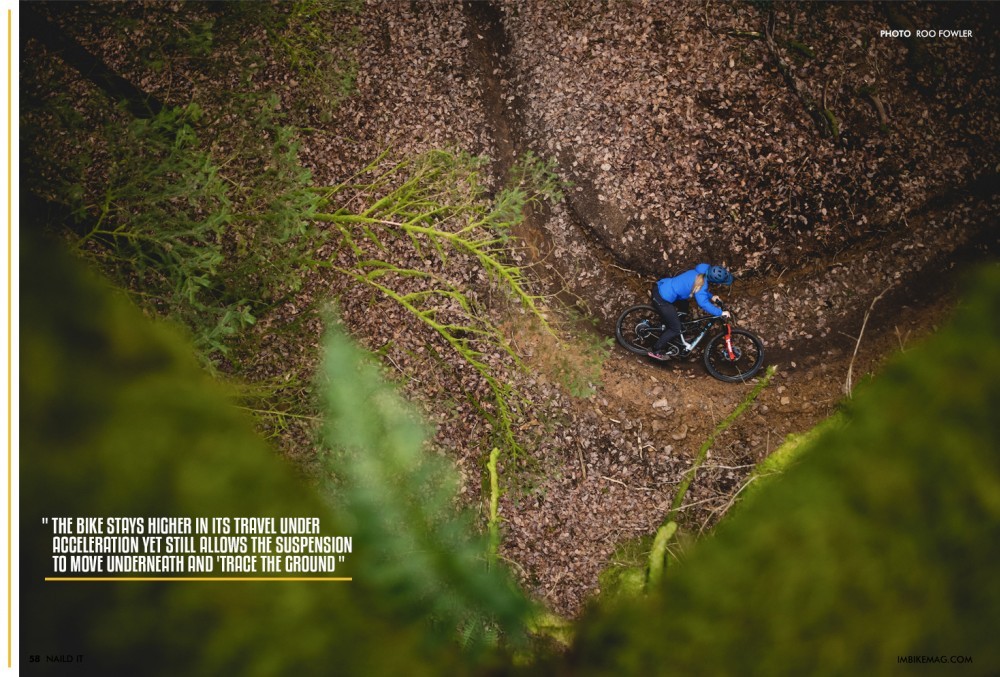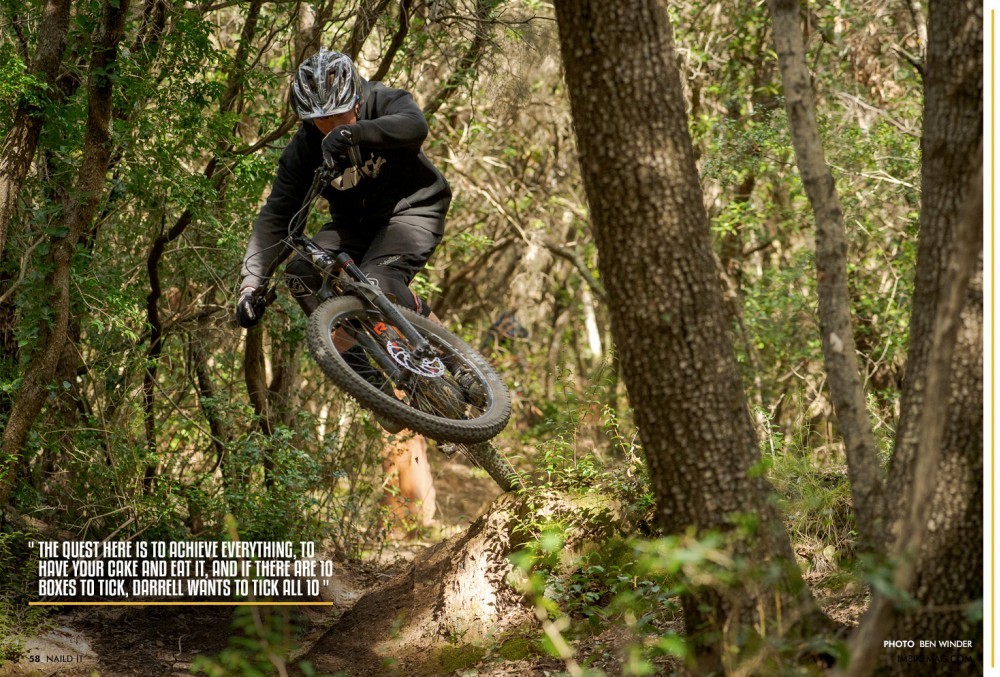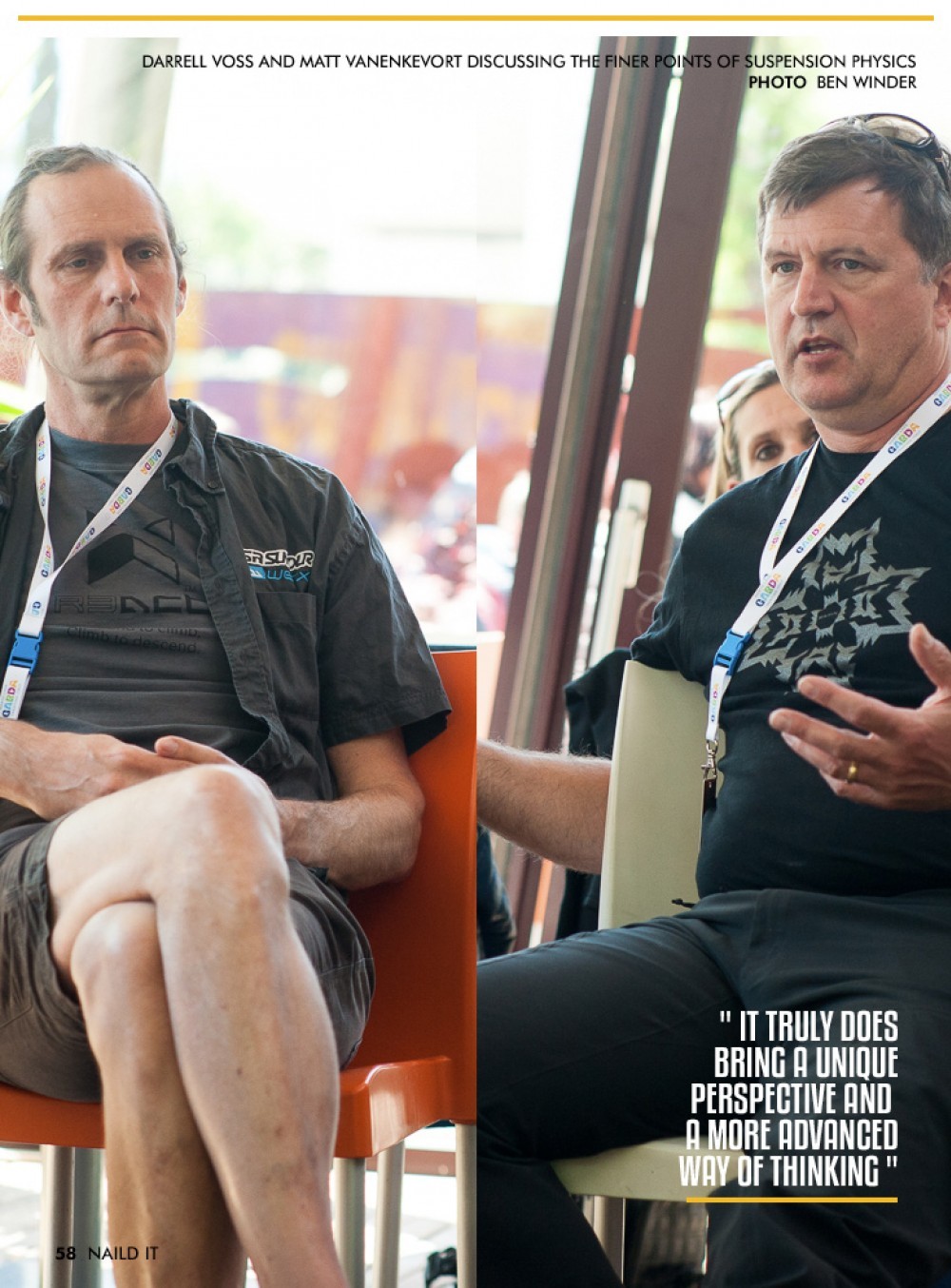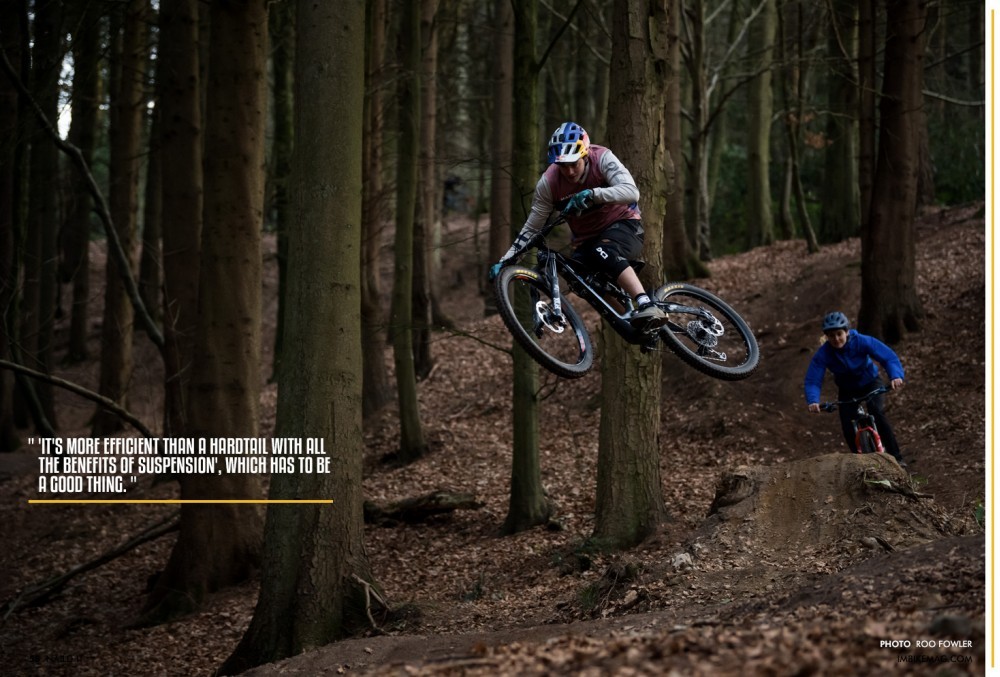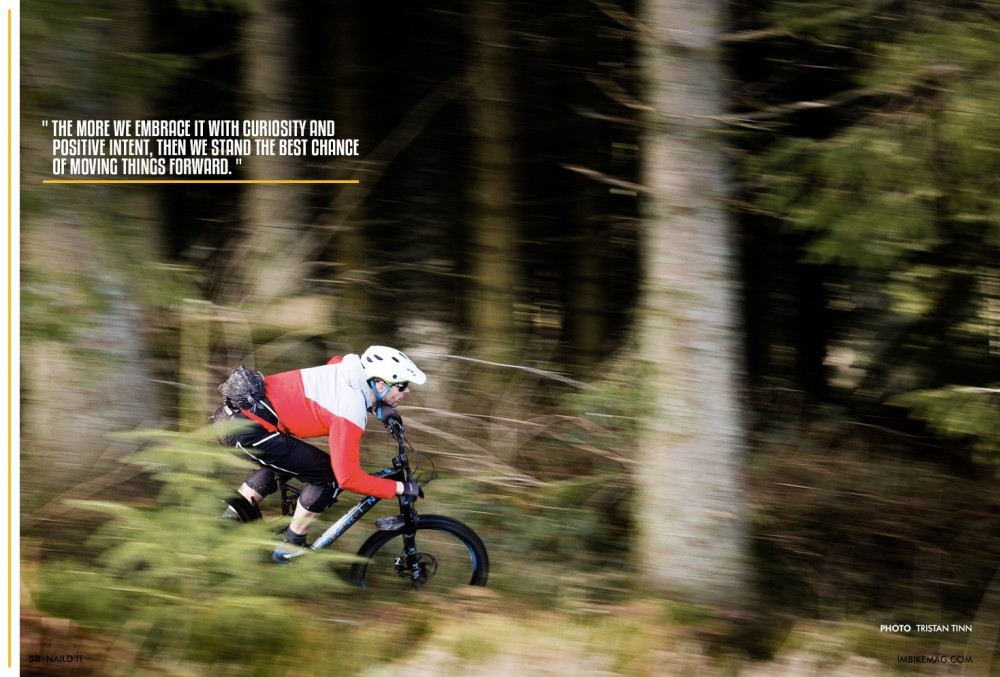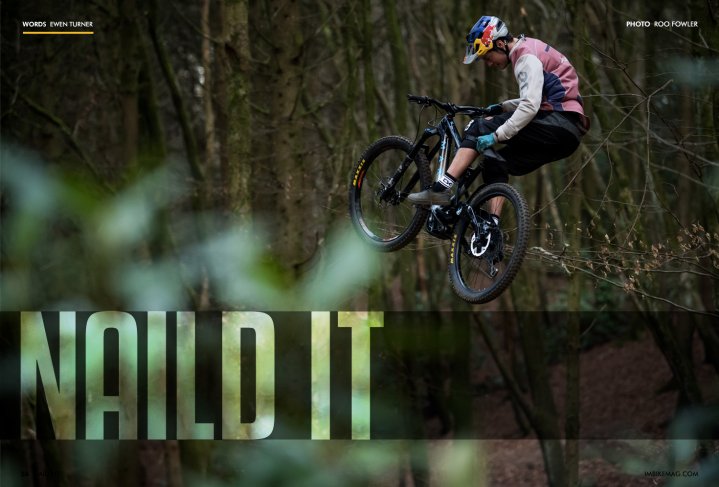
Naild It
Issue 58 / Fri 19th Apr, 2019
Ewen Turner digs a little deeper into the funky new suspension technology coming from Naild and finds out who's behind it and how it's being incorporated into the mountain bike world and what that means for us.
When I was invited out to Italy a few years back to a Marin bike launch, I was expecting a pretty standard event, with a pretty standard bike. Mountain bikes these days sometimes feel like they are on a convergence course, as they all start to look the same, pivots gradually moving into more and more familiar positions and quirky designs fall by the wayside. Identifying a bike from its silhouette becomes harder and harder, as the similarities grow. Perhaps mountain bike design is done and dusted, completed, and we can put our feet up and relax, this is as good as it gets?
What emerged from Marin, and at around the same time Polygon was something new. Very new. It was different and still is different. Not just in the look of the design, but what it promised to do. We were told we could have our travel and pedal it too. Long travel bikes, with exceptional pedalling characteristics with no switches or levers. With these bikes having being raced at World Cups, the EWS, launched from cliffs at Rampage and now with another new bike just launched from Marin, has NailD's R3act 2 Play (yeah it's a mouthful) system finally arrived?
The R3act2Play platform is unique, both in the way it looks and the way it functions. It works with an elevated mono-stay and looks essentially like a single pivot bike at first glance. What is different is that attached to the main pivot is a stanchion, or slider, or strut, (call it what you will), which rotates and allows the swing arm to move in a very specific way, sliding along the stanchion as the shock compresses. There are then two other linkages, which drive the shock, and these look more conventional and familiar. The aim of all this is to control the kinematics of the rear suspension with the mechanics of the system and not rely on shock damping as much.
The system promises to balance out the rider forces and provide a 'ground tracing' bike that will allow for efficient pedalling, maximum traction and a huge depth of supportive travel. It's a lot to promise, and in a world where mountain bike suspension systems seem to be 'worked out', it's a lot for consumers to take in. Couple that with the, shall we say 'striking' looks; it has certainly made an entrance.
So the story starts with Darrell Voss, the man behind what is now Naild, but the idea stems from long before that. Despite being unmissable with his extremely tall frame, he's not one to shout about himself or his achievements from the rooftops. Despite having his fingerprints on many aspects of modern mountain bike and suspension design, his name is relatively unknown by consumers.
With a background in Engineering and business, he grew up in the bike industry, first in bike shops and then pretty early on started working for brands. 'My first job through high school was with Koolstop, it was an afterschool job, and I made the moulds for the pad and rebuilt equipment and product development'.
Darrell soon ended up working with Gary Klien, and developing some of their most iconic bikes of that era and working on hydroforming tubes and their shaping. Gary asked him to come and work for him and take over the engineering department, as he needed a bike-focused engineer, so Voss joined late 1989, but they had been working together since 1984. That move to work for Klien got him into the bike business 'properly', but still staying behind the scenes explaining, 'I just haven't been a figure out in front of everybody's nose. I'm not a guy to push to the stage front and say I've arrived'.
Changes in the bike world led to Trek buying Klein, and although Darrell stayed on for a bit, he left wanting to stay on the product evolution side of the industry. A series of projects and involvements throughout the bike world has been the progression since. Then, in 1999, he started working for Suntour and now sits on their product steering committee, a relationship that continues to this day and sits alongside and separate from his other projects, most notably Naild.
So when I ask when the idea for R3act-2-Play first came about he is very clear, 'that would be in 1991'. This was the point at which Voss realised he was unhappy with the state of suspension, 'shock tech was horrible, spring curves were limited' he tells me, and it was obviously a hard world to be making suspension bikes. It was a time when suspension bikes were arriving and starting to prove themselves to be viable.
At this time Darrell's thoughts turned to damping, and discussions with certain physicists from other industries led to some important conclusions, that 'damping is energy loss' and 'should be used for control but not for the performance side'. This seed was planted in 1993 July he remembers, 'I was going; what the hell does that mean? And why are we doing what we are doing as an industry?' Things were getting complicated, and at the time the technology was not the greatest with 'shocks that would leak oil with the best seals and tolerances you could get at the time'. 'We are spoilt today' Darrell explains, 'riders on our system don't have to touch anything, maybe change the pressure to slightly adjust the sag, that would be unfathomable back them.'
The real concept of Naild was born in 2002. 'I wasn't under pressure at that point, the bikes weren't awesome back then, and the construction wasn't there'. This wasn't the time for prototypes, 'I didn't care about the construction method, I cared about energy in and energy out'. I'm left imagining wild scribbling on a blackboard and a shout of Eureka, and it turns out that wasn't far from the truth, 'yeah there was some of that for sure, this stuff was different, and still is different, people still don't know what we are doing differently today, they think its hocus pocus'.
The prototypes did finally get built, but he 'didn't want to build bikes' and was looking for the right partnership to come along. In 2011 he started thinking about making a prototype again for the first time since 2002. There were obvious barriers to this, mainly in costs and for Darrel he hadn't found a brand he wanted to work with up to that point.
Working with Marin, Darrell looked into producing prototypes and got one out for a test with the team. 'We went out riding on the first prototype, with the test team including some big names who know about pedalling and pushing bikes hard. The giggle factor kicked in, and although the prototype weighted 45lbs everyone was fighting over the test bike to pedal back up the hill, it was more efficient than all the other bikes'.
Describing how the system works apparently is best done with some complex physics, but my brain certainly won't manage that. Darrell describes it thus, 'we are stabilising the acceleration of mass, so f=ma, other bikes collapse, ours doesn't collapse there is a problem in using anti-squat values to reference what our bikes do. The high anti-squat values on the Naild system don't make the bike lockout (as would be the case with high anti-squat on a traditional system), but allow the bike to trace the ground. Our system doesn't lock out when you're tracing the ground but does provide support so that the front and rear frame member doesn't collapse under the mass acceleration'. This means the bike stays higher in its travel under acceleration yet still allows the suspension to move underneath and 'trace the ground'.
This is different from the classic ideas of suspension where Darrell explains, 'there are two ways to support the system, either with high anti-squat or flipping a switch'. This can have a knock-on effect, such as losing traction, tyres spinning and destabilise the rider's mass.
For me, there is a strange, but reassuring familiarity with all the Naild bikes I've ridden. Set the sag, hop on and go, hit the pedals hard and the power comes, pedal up something steep, loose, slippy, and the wheel tracks the ground while you do your worst on the pedals. Firm from the top down, supple from the bottom up. It really seems like the best of both worlds, and it feels strange but good strange.
The quest here is to achieve everything, to have your cake and eat it, and if there are 10 boxes to tick, Darrell wants to tick all 10, and more. The system is way beyond the drawing board and it's is out there getting proven, as Voss reminded me 'Kurt Sorge does the biggest jump rampage has probably ever seen, on this technology', that's a serious bit of testing.
Matt Cipes is the guy at Marin tasked with bringing Naild technology to their bikes. When he started at Marin the Wolf Ridge was underway, and he saw it through to the finish, but the latest version, the Mount Vision has far more of his fingerprints all over it. ' I started with Marin in June 2015, and they were already three-quarters of the way through the Wolf Ridge, a lot of it was good to go, so just finishing the finer details and taking the last step', 'The Mount Vision is the sharpening of the tool'.
Cynically, I wonder if he's just paid to make it work, would he be working with this system if he could choose anything? The answer is unequivocal, 'absolutely, everyone is looking for an edge, and with the Naild system it truly does bring a unique perspective and a more advanced way of thinking about how a bike system works and in that way is groundbreaking and I would still be working with it in'. Matt is clearly fully committed to this new way of doing things; 'I talk now about standard suspension system and the R3act system, it has different tuning and different kinematics, you can't talk about it in the same way as it's not limited by the same fundamental principles'.
So putting a new suspension system into a frame has to be pretty challenging, Matt's job is to, work with Darrell the 'Mad scientist/genius' and as he puts it and 'take the magic and distil it down into a product that people want and will be excited about'. What about the look? How much can a designer do with the R3act system? Apparently, it's all open for discussion, but the elevated chainstay remains the same. 'Ultimately we have control over the front triangle and the look as we do on any bike, the trick is to get the positioning and the strengths and function with the different pivot positions and the geometry we are looking for'.
There are reasons for everything, as you might expect, with Matt telling me 'the large downtube is for strength and comes down further than most for the water bottle. The belly is forward and has the overhanging bottom bracket as there is a nice carbon beam down the centre for extra strength and then the moto skid plate on the front to protect it. We feel we've done a good job with this bike, at least it doesn't look like a Session'.
It's clear Matt loves these bikes and the benefits they bring; 'I think the main benefit is that we're here to ride bikes not flip switches' explaining that the simplicity of the system allows for easy setup and no need to adjust out on the trails. Further to this, he adds, 'it's more efficient than a hardtail with all the benefits of suspension', which has to be a good thing.
I ask Matt about Polygon, and there has been plenty of chatter in the internet-world about them using the same system and the similarities. Taking this topic further I ask Matt how much contact they have with one another 'well, no more than anyone else. Take VPP, would you say Intense and Santa Cruz are the same thing? Well no. What is important, he tells me is that 'brands dictate to Naild what they want, not the other way round.'
So what's next? Is this a flash in the pan or are we going to see more? 'Yeah absolutely' is the response from Matt, but will there be a trickle down to lower level bikes? 'Definitely something we're pushing, but it has its challenges, and we're looking at lots of different things'.
And what of shorter travel bikes? Matt again is pretty excited, 'pedal efficiency benefits all bikes, regardless of suspension travel, imagine racing on a 120mm bike against those on a 100mm but being more efficient, that's pretty interesting, but that’s not to say we're gonna go there.'
Darrell's philosophy is to 'build a better bike at the best price' and poses the question that 'shouldn't we be seeking how to we get people down faster, safer and with more fun?' and this is the essence of what he is trying to achieve, creating suspension technology aimed at making life better for every rider.
There was a time when URT suspension was the best we could do, but things have moved on, and that always come with change. I love technology, progression and change, and the more we embrace it with curiosity and positive intent, then we stand the best chance of moving things forward. We've learnt to understand what we have, but perhaps not question what could be, or what should be. Voss is happy to ask these questions, and what's more, deliver on it…
Videos
By Ewen Turner
Ewen Turner is a self-confessed bike geek from Kendal in the Lake District of England. He runs a coaching and guiding business up there and has a plethora of knowledge about bikes with an analytical approach to testing. His passion for bicycles is infectious, and he’s a ripper on the trails who prefers to fit his working life around his time on the bike.




